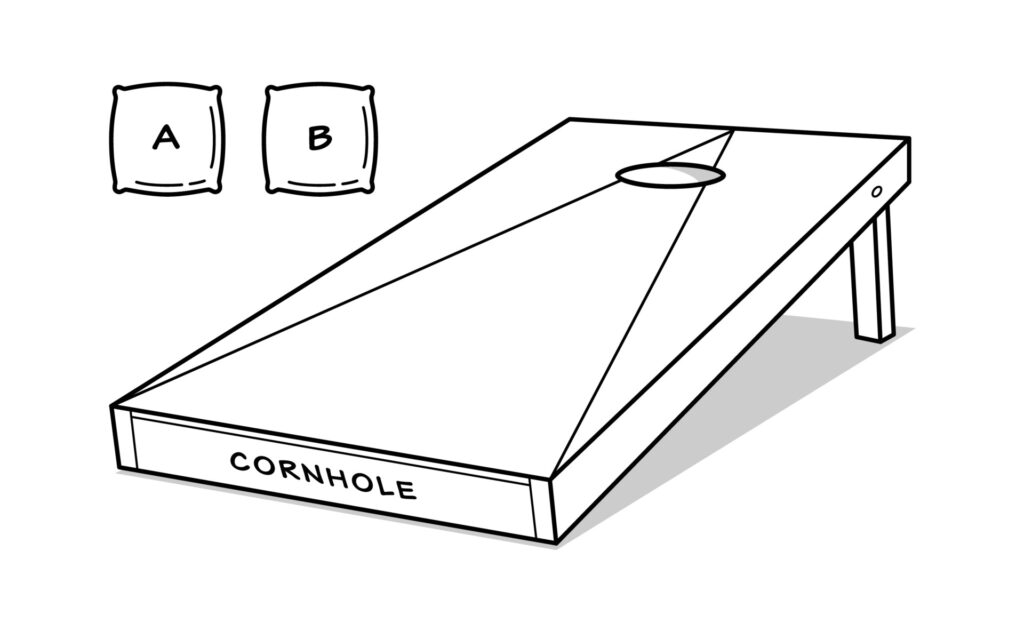

Cornhole is a popular backyard game where players toss bean bags toward a raised board with a hole in it. One of the most important aspects of the game is the size of the cornhole hole itself. Whether you’re setting up your own cornhole game or competing in a tournament, knowing the correct dimensions of the hole is key for consistent and fair play.
In this article, we’ll discuss the official size of the cornhole hole, how it impacts gameplay, and why the size is important for a fun, competitive match.
Table of Content
1. Official Cornhole Hole Dimensions
2. Why is the Size of the Cornhole Hole Important?
3. How Does the Cornhole Hole Affect Scoring?
4. Materials and Construction of the Cornhole Hole
5. How to Make Sure Your Cornhole Hole is the Right Size
6. Impact of Weather on the Cornhole Hole
7. Fun Facts About the Cornhole Hole
8. Conclusion: The Importance of the Cornhole Hole
9. Frequently Asked Questions (FAQs)
1. Official Cornhole Hole Dimensions
According to the official regulations from governing bodies like the American Cornhole Organization (ACO), the cornhole hole must meet specific measurements:
These precise measurements help ensure that the hole is large enough to accept the bag but small enough to require skillful tossing to land the bag inside.
2. Why is the Size of the Cornhole Hole Important?
The size of the cornhole hole plays a crucial role in how the game is played. Here are a few reasons why the official dimensions matter:
3. How Does the Cornhole Hole Affect Scoring?
In cornhole, scoring depends on whether or not your bag lands in the hole or remains on the board. Here’s how the hole’s size impacts scoring:
The smaller 6-inch hole ensures that players must be precise with their tosses, which is why it’s so rewarding when a bag lands in the hole. A larger hole would make it easier to score, changing the dynamics of the game.
4. Materials and Construction of the Cornhole Hole
The hole itself is usually made by cutting a circle in the board. The edges of the hole should be smooth and free of any rough spots that could interfere with the bag’s entry. Most cornhole boards are made from plywood or similar sturdy materials. The hole’s edge is usually rounded or beveled slightly to prevent the board from splintering.
Some players might add grommets or reinforcements around the hole to ensure it lasts longer and doesn’t get damaged during frequent play.
5. How to Make Sure Your Cornhole Hole is the Right Size
If you’re building your own cornhole board, you can follow these steps to ensure the hole is the correct size:
If you’re buying a pre-made set, double-check that the hole’s diameter is 6 inches, as some sets may be manufactured with slightly different dimensions.
6. Impact of Weather on the Cornhole Hole
Weather can affect your cornhole gameplay, especially if you’re playing outdoors. Humidity or rain can make the wood around the hole swell, potentially affecting how the bag behaves when it lands. To ensure consistent gameplay:
7. Fun Facts About the Cornhole Hole
Conclusion: The Importance of the Cornhole Hole
The cornhole hole is one of the defining features of the game, and its size plays a huge role in how the game is played. The official 6-inch hole creates a fair challenge that requires skill and strategy, making it one of the most exciting parts of the game. Whether you’re playing casually or preparing for a tournament, knowing the size of the cornhole hole is essential for a consistent and enjoyable experience.
Frequently Asked Questions (FAQs)
Q1: Can I use a larger hole in my cornhole board?
For casual play, you can make the hole bigger, but for official play, the hole should be 6 inches in diameter. A larger hole would make the game easier, which changes the challenge.
Q2: How deep is the cornhole hole?
The cornhole hole should be a simple through-and-through hole, with no specific depth requirement. It’s the diameter that matters most for gameplay.
Q3: Why does the hole need to be 9 inches from the back?
The placement of the hole at 9 inches from the back ensures that the game is fair and challenging. It helps create the right slope for the board and the correct distance for aiming.
Q4: Can weather affect the hole’s size?
Yes, extreme humidity or moisture can cause the board to expand or contract slightly, which could impact the hole’s size or shape. Always store your boards in dry conditions to avoid this.
Q5: How can I make sure my cornhole hole is the correct size?
Use a 6-inch hole saw to cut the hole, or measure the hole’s diameter carefully if you’re making it by hand. Always double-check the dimensions to ensure consistency with official rules.